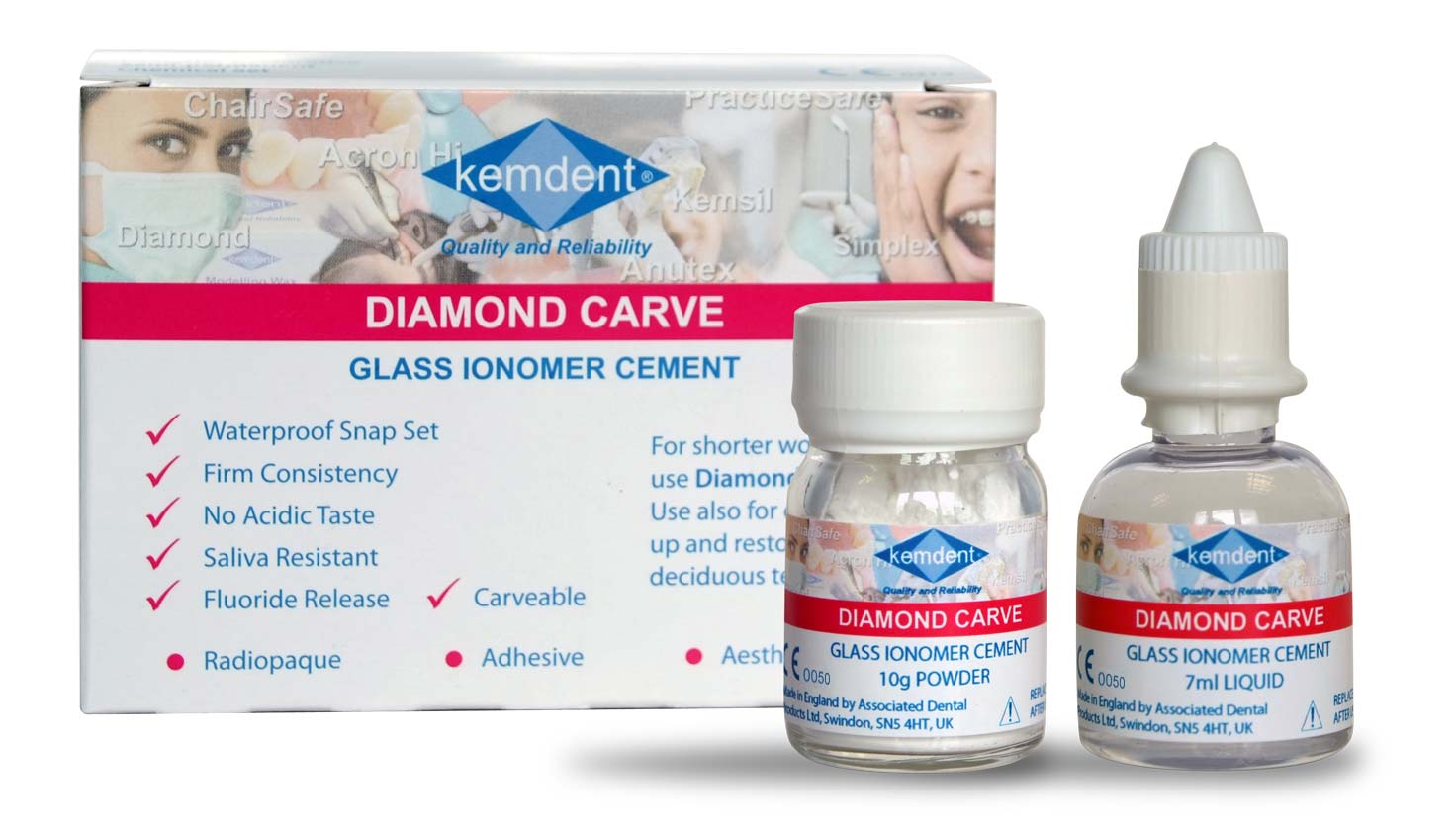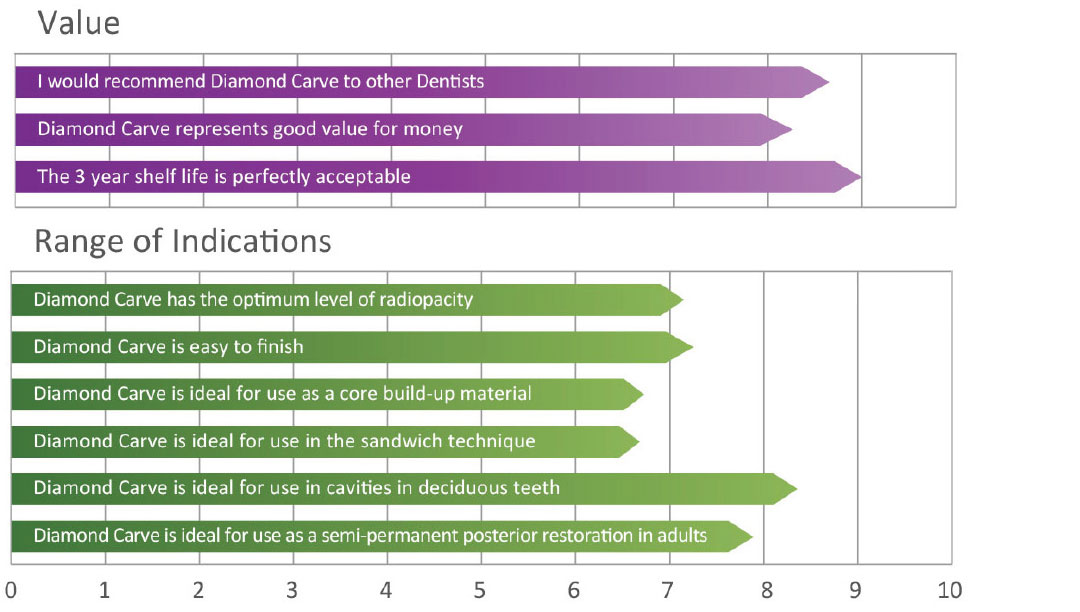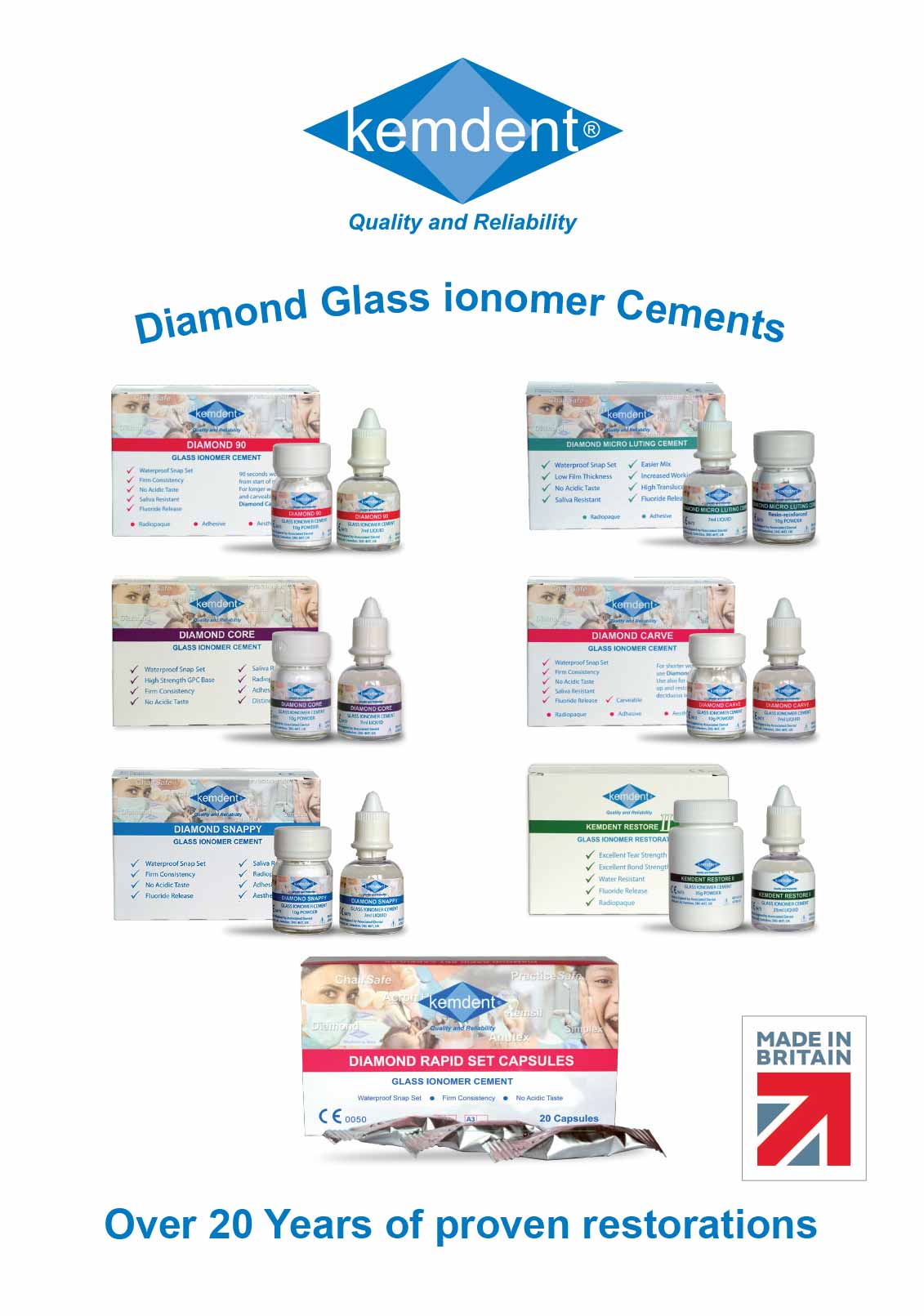 A recent customer survey reinforces why Diamond Carve is the ideal alternative to amalgam, Kemdent explains.
A recent customer survey reinforces why Diamond Carve is the ideal alternative to amalgam, Kemdent explains.
Kemdent recently conducted a customer survey amongst its many regular Diamond Carve customers. The aim was to find out exactly what they thought about Diamond Carve. And also to see if it needed any changes to make it even more user friendly and appropriate to use. The answer was a resounding no. With the vast majority of customers saying that it was perfect in virtually every aspect.
The survey asked customers 20 questions about Diamond Carve. The tables below show the overall results. They clearly demonstrate that Diamond Carve is easy to use and offers an ideal combination of mixing, working and setting times. Once mixed it also offers an ideal consistency for placement and carving and a strong adhesion to the tooth surface. Finally, it has the ideal strength for its recommended indications. It includes an adequate range of shades, which each accurately match the stated Vita shade.

Most of the responders use Diamond Carve for restoring deciduous teeth and for semi-permanent posterior restorations in adults. However, it is also extensively used as a core build-up material and in the sandwich technique. Easy to finish, they felt Diamond Carve had the optimum level of radiopacity for each of these indications.
Finally, with a three-year shelf life the responders stated that Diamond Carve represents good value for money. They would definitely recommend it to other dentists.

Post-Minamata
The October 2013, globally-binding Minamata Treaty on the use of mercury, means dentists need to find a suitable alternative to dental amalgam. There are many to choose from, all with their own relative merits. But many believe that Kemdent’s Diamond Carve offers an extremely user-friendly and cost-effective option worthy of serious consideration.
What makes Diamond Carve special?
Kemdent first introduced the Diamond glass ionomer cement (GIC) range to the dental market in March 1999. Now, 19 years later, the Diamond range is one of the world’s leading GICs, which literally thousands of dentists in over a dozen countries worldwide use daily.
Diamond provides dentists with a clinically proven GIC restorative material. It effectively performs highly aesthetic restorative procedures, replacing traditional composite, and amalgam methods of working. Chemical curing, without dimensional change, means it is possible to place Diamond restorations in one increment. This saves time and avoids the creation of stresses within the restoration that incremental build-up using composites causes. Both of these advantages also contribute to its relative lack of postoperative sensitivity compared with bonded composites. Fluoride release is another significant advantage.
Diamond is also far less susceptible to moisture around the operating site. This is partly due to its rapid chemical snap set and its mercury-free composition. It quite categorically adheres to both enamel and dentine, without the need for acid etching – saving time and additional expense. Finally, there is no polymerisation shrinkage and consequent cracking associated with Diamond.
The innovative Diamond range allows dental practices to perform various styles of chairside treatment. The firm consistency of the Diamond GIC range allows easy placement of the materials and rapid ‘snap setting’, matching tooth colour in just over two minutes at normal room temperature.
Gone are the days of sending away patients with poorly aesthetic, opaque, moisture sensitive restorations, with instructions to return a week later for polishing, hoping that when they return moisture contamination hasn’t weakened the restoration.
Ideal aesthetic alternative to amalgam
Diamond Carve is a hand-mixed glass ionomer cement for posterior indications including non-load bearing class I and II restorations, together with class V abrasion cavities.
Its use is also for restorations in deciduous teeth, core build-ups, amalgam repairs – where it helps minimise the health risks associated with the removal of old amalgam restorations, and the cementation of posts in root canal restorations.
Diamond Carve Powder is made from alumina-silicate glass containing calcium fluoride as well as strontium and barium for radiopacity. Plus a number of dry acids to enhance the setting reaction.
Diamond Carve Liquid is a water-based acidic solution. They combine together in a 4:1 ratio, with one scoop of powder to one drop of liquid. Setting occurs through an acid/base reaction.
Diamond Carve is self-adhesive to both enamel and dentine. In addition to its inherent calcium fluoride content, it also acts as a fluoride reserve where it can reabsorb fluoride from mouthwashes, toothpastes, or many other sources of fluoride and then gently release it in a low and controlled concentration. Therefore, it offers the added benefit of long-term fluoride release.
Available in seven aesthetic shades, an immediate advantage over ‘dirty old amalgam’, it is manufactured from a special GIC, which contributes to a range of features including versatility and strength.
With a 350MPa compressive strength Diamond Carve is up to 50% stronger than other glass ionomer cements, saliva resistance, excellent finishing and wear resistance properties.
In addition to this, tests have proven that there is no dimension change during the setting reaction and no postoperative sensitivity. These advantages, together with its packable consistency, durability and ease of use make it the ideal aesthetic alternative to amalgam.

Hints and tips for using Diamond Carve
Diamond Carve has a working time of between two and two-and-a-half minutes and a setting time between three minutes 40 seconds and four minutes. It requires minimal preparation, simply the requirement to remove soft caries and undermined enamel, with no varnishing afterwards.
It adheres to dentine and enamel without the need for any preparation of the tooth surface or a bonding system, thereby saving valuable surgery time and additional expense compared with composite materials. The cement becomes rapidly carvable and offers a ‘waterproof’ chemical snap-set.
To see a short ‘How to use Diamond Carve’ video demonstrating the mixing and handling of Diamond Carve, visit the homepage on the Kemdent website www.kemdent.co.uk.
Diamond is also far less susceptible to moisture around the operating site. This is partly due to its rapid chemical snap set and its mercury-free composition.
Diamond Carve is part of the Diamond GIC range. Associated Dental Products manufactures it in the UK. For further information contact Kemdent on 01793 770 090, visit www.kemdent.co.uk or email [email protected].


